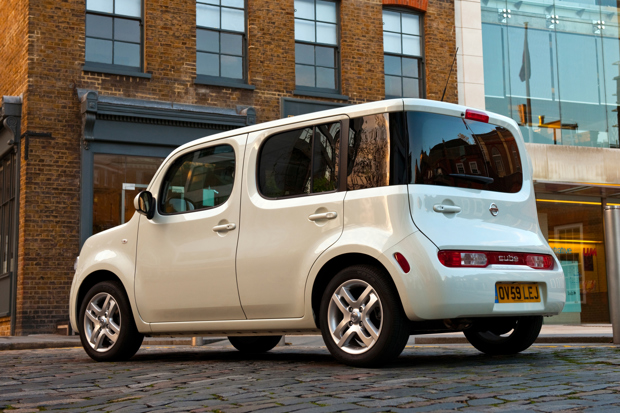Future Classic Friday: Nissan Cube
.jpg?width=620)
There can’t be many niches left in the car market, but when Nissan decided to introduce the oddball Cube to the UK market in 2009, the Japanese car maker certainly tried to create a new one.
Neither MPV nor estate car nor SUV, the asymmetrical Nissan was a family car with a difference. Based on the sales figures – with fewer than 1000 sold over a three-year period – it was perhaps a bit too different.
Certainly, the looks were interesting. Lofty, and with the aerodynamics of a Lego brick, the Nissan Cube took the definition of boxy to new heights. And then there was its glass area, which had a wraparound rear screen on one side, but not the other.
The interior defied convention, too, with a dashboard that curved around both driver and passenger and upright air vents above a giant circular air con and heating control module.
Then there was the optional shag-pile rug, which would sit atop the dashboard and earned the internal nickname of ‘cubic hair’ from Nissan’s dealer network.
Weird as it was, the fluffy pad was actually quite useful, as you could place items such as your mobile phone or sat nav within its bushy embrace and they were prevented from rolling around the cabin.
Like the rest of the Nissan Cube, it was weird and wacky, but surprisingly functional.
Indeed, as family cars go, the Nissan Cube offers loads of headroom (unsurprisingly) and plenty of legroom, along with a decent boot.
If you need a modern classic that’s perfectly capable of doing the school run, then it ticks all the boxes, though don’t be surprised if the kids choose to alight with paper bags over their heads.
What you think is cool and what they do are two very different things, as you’re probably already aware from their taste in music.
.jpg?width=620)
Where the Nissan Cube was utterly conventional was under the skin – the car was built upon the platform of the far more mainstream Nissan Note small MPV (see also: Renault Modus) and was pretty ordinary to drive.
Ordinary in a good way, that is, for it had decent enough handling and ride comfort, though its performance would never set the world on fire.
In Japan, there were a few engines to choose from, but UK buyers got just the one – a 1.6-litre 108bhp unit that allowed it to keep up with traffic adequately, with a choice of five-speed manual or CVT automatic transmissions, the latter of which was better suited to the Nissan Cube’s non-conformist character.
Today, there are around 900 Nissan Cubes left on British roads, meaning it’s quite a rare car already, though most owners tend to be fiercely enthusiastic about them, and that bodes well for their future survival.
It also means they hold their value pretty well, too, with even the oldest examples still making upwards of £3000 on a good day.
If you’re brave enough to try one, you’ll probably be pleasantly surprised. There are few cars of the late 2000s that are as immediately interesting, and that’s something you can’t deny whether you love or loathe the looks. Indeed, Nissan should be commended for even giving it a go.
In a world of increasingly amorphous, upright and dull family cars, the Nissan Cube is a refreshing alternative, and one that loyal owners tend to love.
As niches go then, Nissan may well have accidentally invented the niche classic car. Find a classic Nissan for sale.

Can you drive a SORN car to an MoT test?


